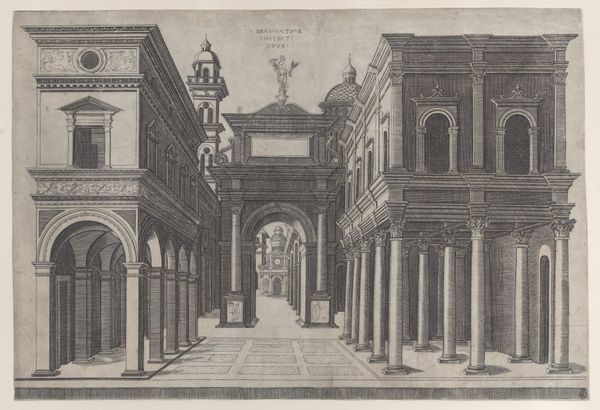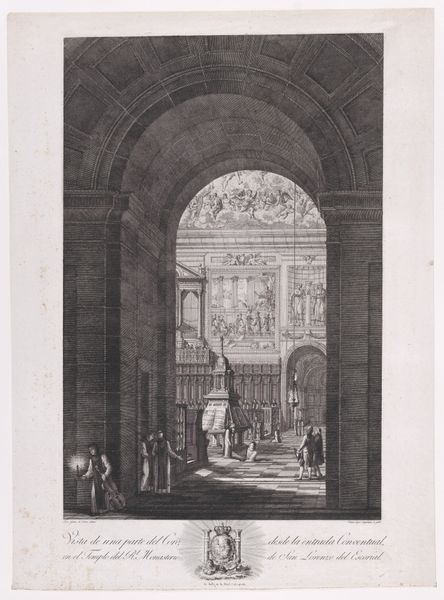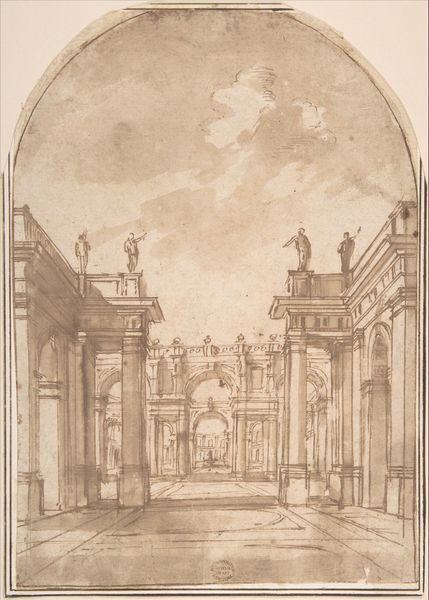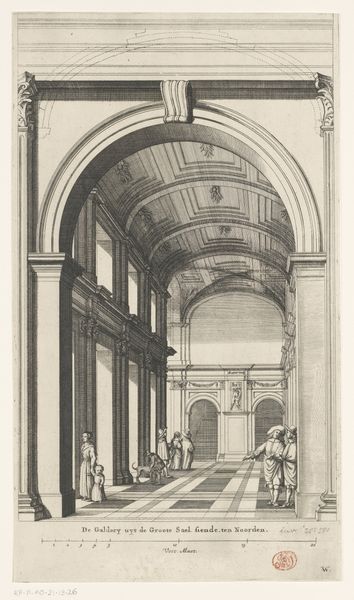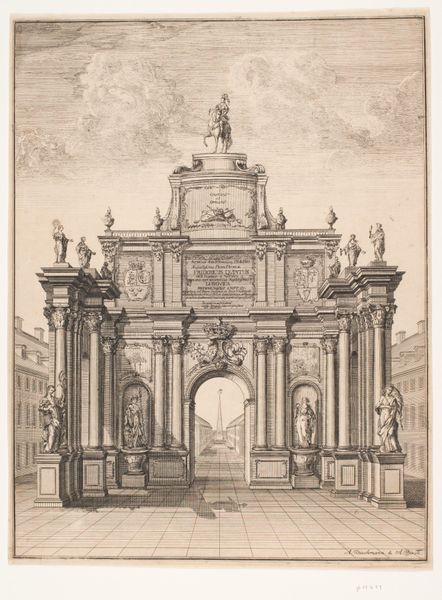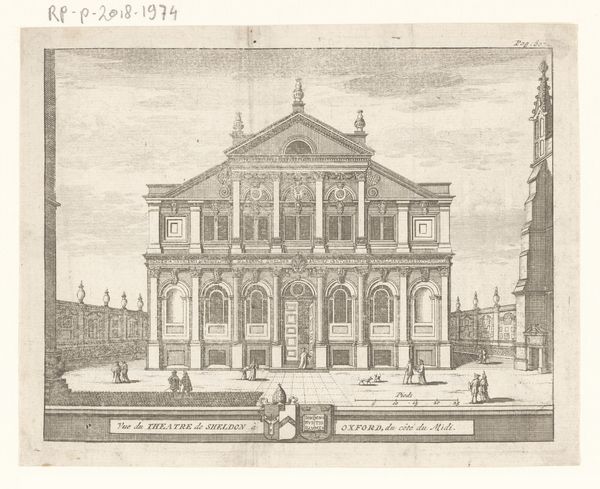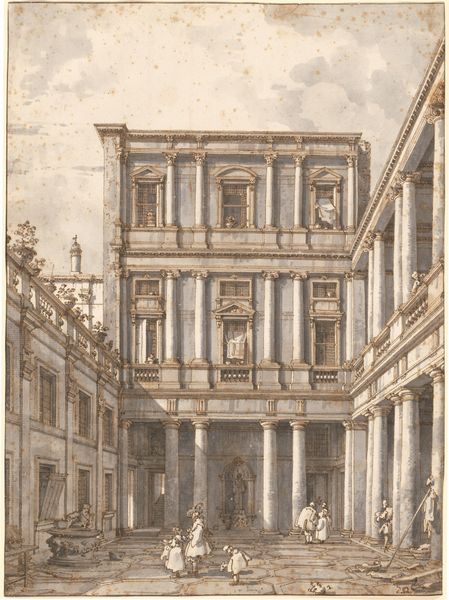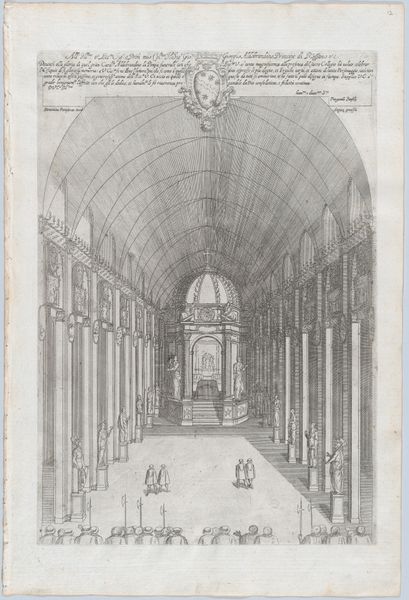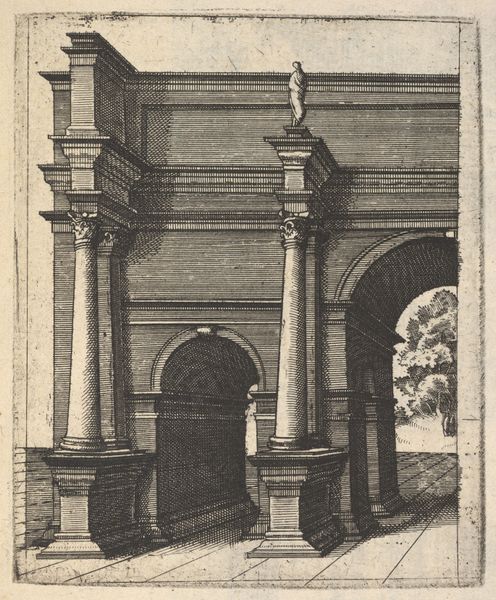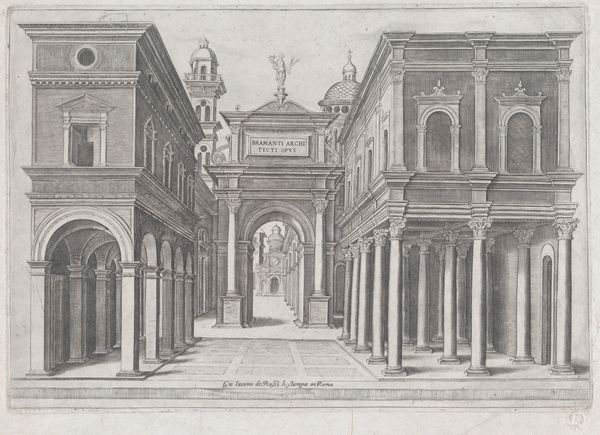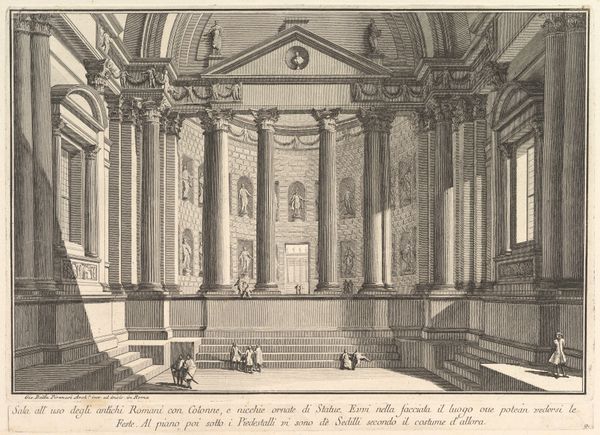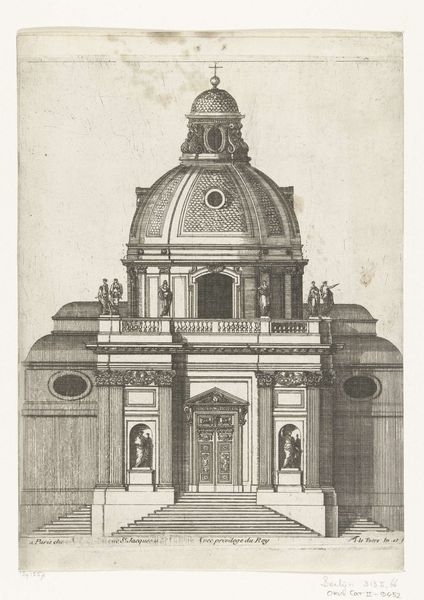
View of the Patio of the Kings in the monastery of El Escorial, from a series of Views of El Escorial 1785 - 1795
0:00
0:00
drawing, print, etching, engraving, architecture
#
drawing
#
neoclacissism
# print
#
etching
#
landscape
#
cityscape
#
engraving
#
architecture
Dimensions: Sheet: 20 11/16 in. × 12 in. (52.5 × 30.5 cm) Image: 17 13/16 in. × 12 in. (45.2 × 30.5 cm)
Copyright: Public Domain
Curator: I find this print quite striking, really pulling me into another era. This is Tomás López Enguidanos’s "View of the Patio of the Kings in the monastery of El Escorial, from a series of Views of El Escorial," created sometime between 1785 and 1795. It’s a beautiful example of neoclassical landscape, rendered through etching and engraving. Editor: What immediately grabs me is the feeling of confined grandeur, looking through those heavy archways into this rigid courtyard. It feels almost…theatrical? Curator: Exactly! I think that sense comes from the staged perspective and the figures placed just so. Enguidanos is very deliberate, guiding our eye through architectural precision and geometric harmony. Do you sense a classical Roman influence there? Editor: Unmistakably. And think of arches themselves; for millennia, they have been associated with triumph, or a doorway to a transformation, perhaps religious revelation, considering this is a monastery? It's like walking through a gate into history. The repetition also provides a certain rhythm, emphasizing this architectural ideal, this Neoclassical concept of rational beauty. Curator: I wonder how this vista resonates, though, with its original audience? Did they feel this measured sense of awe, or something more complex? What does a space like this tell us about the era’s relationship to power and the divine? It has an almost stage-like presence, hinting that all power is performance and ritual. Editor: I agree! And there's that subtle contrast, too, isn't there? The imposing, static architecture against those little figures, just moving about their lives, in an almost timeless tableau, dwarfed by something far beyond their personal existences. The image invites us to question: who inhabits this architectural prowess? The arches not only symbolize triumph and transformation but also remind us how such human endeavours transform the individuals within its confines. Curator: So, in looking at Enguidanos’s work, it's the architectural precision that continues to strike me – an era’s values immortalized in stone, framed, quite literally, for our modern eyes. Editor: Absolutely. To me, this image encapsulates humanity’s endless attempt to find harmony and meaning in monumental structure. The symbols contained in this print echo loudly throughout our history and cultural imagination.
Comments
No comments
Be the first to comment and join the conversation on the ultimate creative platform.
